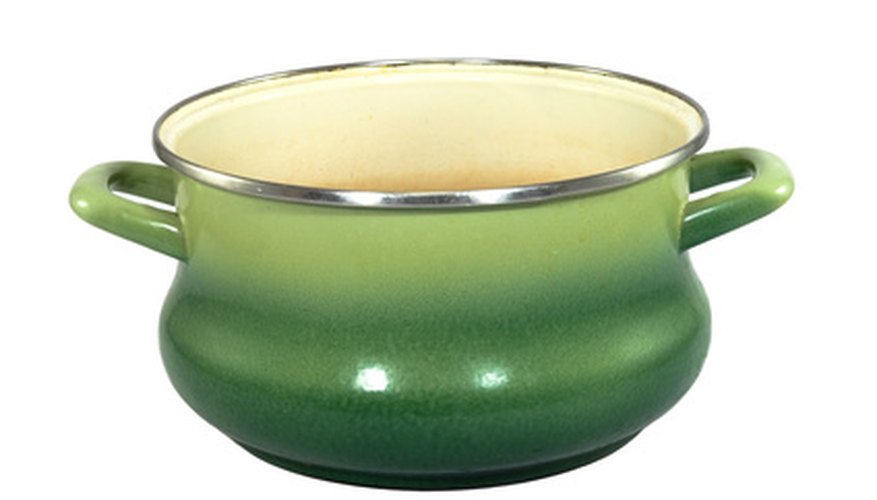Touching up chips in enamel-coated cookware is not recommended, nor is the paint easy to find; it is best just to buy another or oil the chips as you would cast-iron cookware. Teflon as well should be taken off the stove and replaced with a new piece of cookware as soon as there are chips, scratches, or peeling, for the peeling paint can be toxic. Retiring cookware and painting it for aesthetic purposes allows you to keep the pot that you love and decorate your kitchen with it.
Scrub the pot with the brush under warm running water to remove any debris or extra particles. Rinse it thoroughly and dry it with a clean towel until completely dry.
- Touching up chips in enamel-coated cookware is not recommended, nor is the paint easy to find; it is best just to buy another or oil the chips as you would cast-iron cookware.
- Scrub the pot with the brush under warm running water to remove any debris or extra particles.
Spread the newspaper two sheets deep on a flat surface in a well-ventilated area.
Place the cookware on the paper. Spray it evenly all over the inside and around the rim with enamel spray paint. Let it dry according to the manufacturer's directions. Spray it with a second coat and allow it to dry again.
Flip the pot over. Spray one coat of enamel evenly around the bottom and sides of the pan. Allow it to dry. Spray another coat of enamel evenly around the bottom and sides, again allowing it to dry according to the manufacturer's instructions.
Keep the pot in the well-ventilated area for several days, until the smell has dissipated from the cookware. Place it on a high, visible shelf in the kitchen or in a variety of other places to display it.
TIP
Use black enamel paint to give cookware an older look. This goes especially well with a late 1800s or early 1900s themed kitchen.
WARNING
Use spray paint only in a well-ventilated area, preferably outside.
